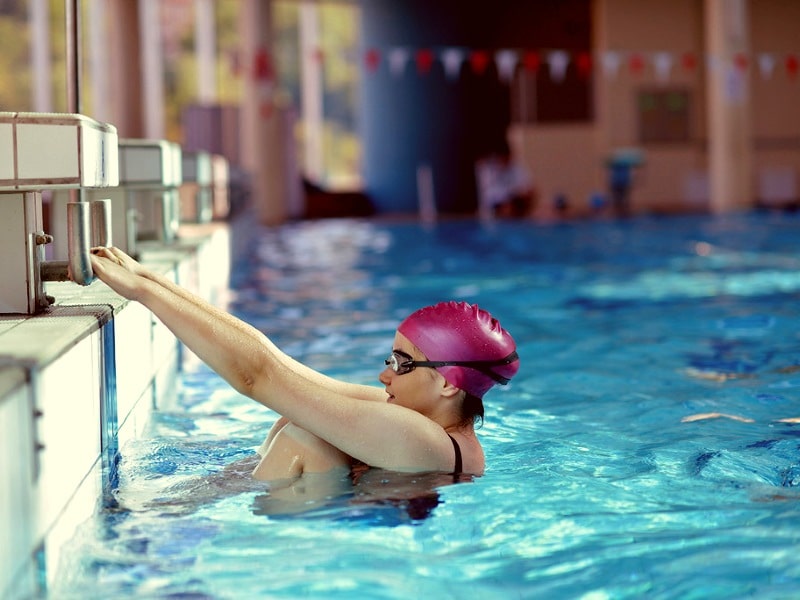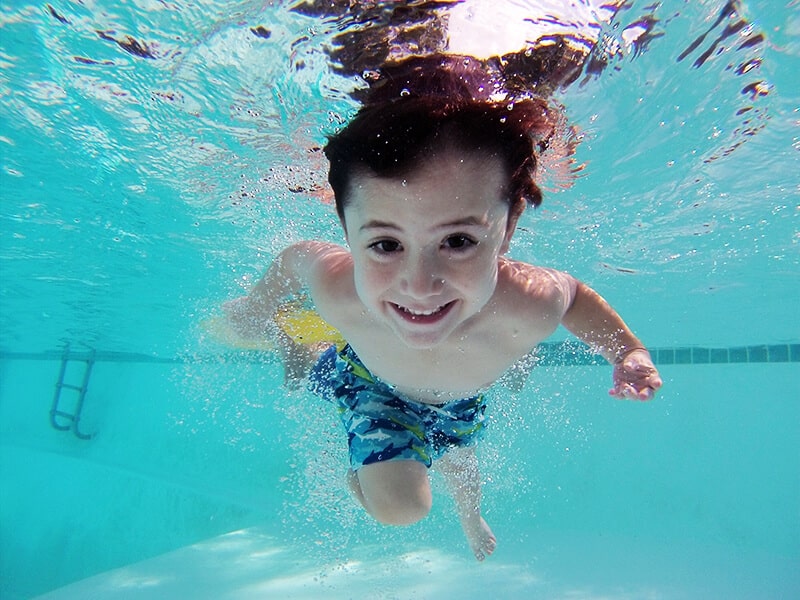
In all swimming styles, the correct (high) position of the body in the water is important. That is, scuba diving is radically different from normal scuba diving. But at first it is only the head that understands it, and it does not understand the body at all. How to accustom him to the correct position in the water during swimming freestyle, we today and will understand.
The correct (high) position of the body – that is, strictly on the surface of the water, at one level – is achieved through several components:
We need to stretch out like a string.
A good exercise, if it is a child, would be to tell him or her to stand in the position of “arrow” and lift him or her out of the water by holding his or her hands. The child should feel the tension of muscles – in the sides, in the stomach. That’s the position you need to be in the water – stretching to the limit.
It would also be useful to stand up to the wall at arm’s length. Then take a step back. And now try to reach the wall without taking your foot off the floor. What would you have to do to do that? Stretch out.
Now about the hands. Four fingers looking strictly into the wall, big to the side.
There is a support on a shoulder and on lateral muscles – not on a palm. Rowing starts not with the elbow, but with a brush. From the position of the “string” first the hand goes back, then the forearm, and only in the last place – the elbow. This is called a stroke through a high elbow. Why is it done? To be supported by water. So that a person stretches out.
Because if the elbow goes back at once, and the rest of the hand drags behind it, there will be no rowing. It means that there will be no progress and we will not go anywhere. Rowing should resemble pushing away from a stone barrier. It is as if we have a wall and not water, and we start from it through a high elbow.
We push back with a brush, forearm, and only then, when the hand goes back, it goes to the hip, straightening up, starts to go back and elbow. He is the last one to straighten out. This is very important, because otherwise the swimming will turn back to stroking water.
Rowing should start as far as possible, stretching – trying to grab as much water as possible, and through the high elbow to warm it back.
Frequent footwork.
It’s always hard to do because the legs are lazy – especially when the child feels like they’re already holding on to the water. The work of the legs comes from the thigh – this is very important – not from the knee. The socks should be pulled out and the knees should not be bent too far.

The latter is a very common mistake – when they try to get their feet out of the water high or kneel on the water. No, the legs are almost straight, the knees are free, the feet are relaxed, and the socks are pulled out. You also need to work with your feet.
The right head position.
You can read about how to achieve it here. Now let’s remind you briefly: your head is lying on the water, with your ear to your hand. In no case it is not bullied on breath.
This again leads us to the fact that the whole body tends to the horizontal position. It is necessary to swim as if we were tied by rubber to the opposite side and by this rubber are pulled, and the person slides on a surface, relaxed and stretched out.
It is necessary to avoid unnecessary, excessive tension, for example, when you carry your hand – the hand at this moment should be completely relaxed. In general, it is known that the first lesson is good to start by showing your child that it is impossible to drown in water.
To do this, you only need to gain air, sink to the depths and relax. Water itself will take out on a superficiality. Here is such a relaxation and should be preserved during the swimming rabbit. And so the hands and feet will get tired, so why the senseless deliberate tension?
Further, we approach the position of the body as a whole. This is difficult, because apart from the movements of its individual parts – arms or legs – there is a certain through movement, namely the rotation of the body. This is quite precisely called a “yacht” or a turn of the shoulders.
It is as if the body rotates around its axis to the side coinciding with the rowing arm. Thus, a quiet and beautiful rabbit swimming should resemble rocking. Not only shoulders are turned – it shouldn’t resemble the dance of a gypsy girl with the upper part of her body – her whole body turns smoothly as if she had started and continued every stroke.
It is also due to the fact that the breath is taken not so much by turning the head as by turning the body. It is as if we simplify and shorten many of our movements, making them smoother and calmer. And, of course, we keep the correct, high position of the body in the water.






